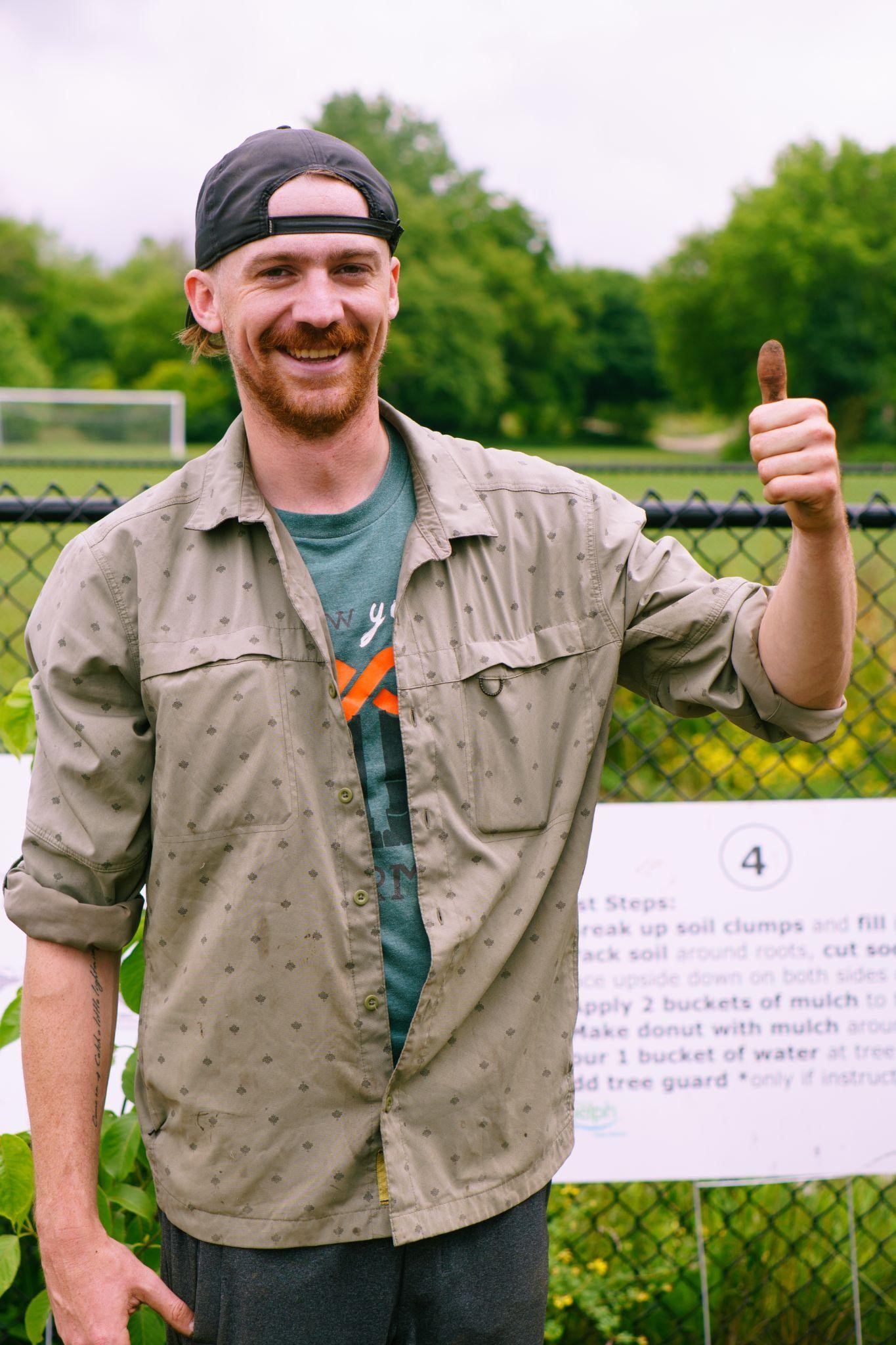By Claire Marshall, Aerial Insectivore Field Technician
We all know gardening is good for your health and well-being, but who would have thought gardening is good for birds?
That’s right, we are not the only ones who benefit from watching the burst of colour pop out of the ground in spring and summer. Native plants, from wildflowers to trees, help encourage growth in insect populations by providing habitat and nutrients for some of nature’s tiniest plant-eaters. Global insect decline is a major concern for conserving native species during this time of profound biodiversity loss, as insects lay at the lower end of the food web – providing a food source for all of the species that depend on insect abundance for survival.
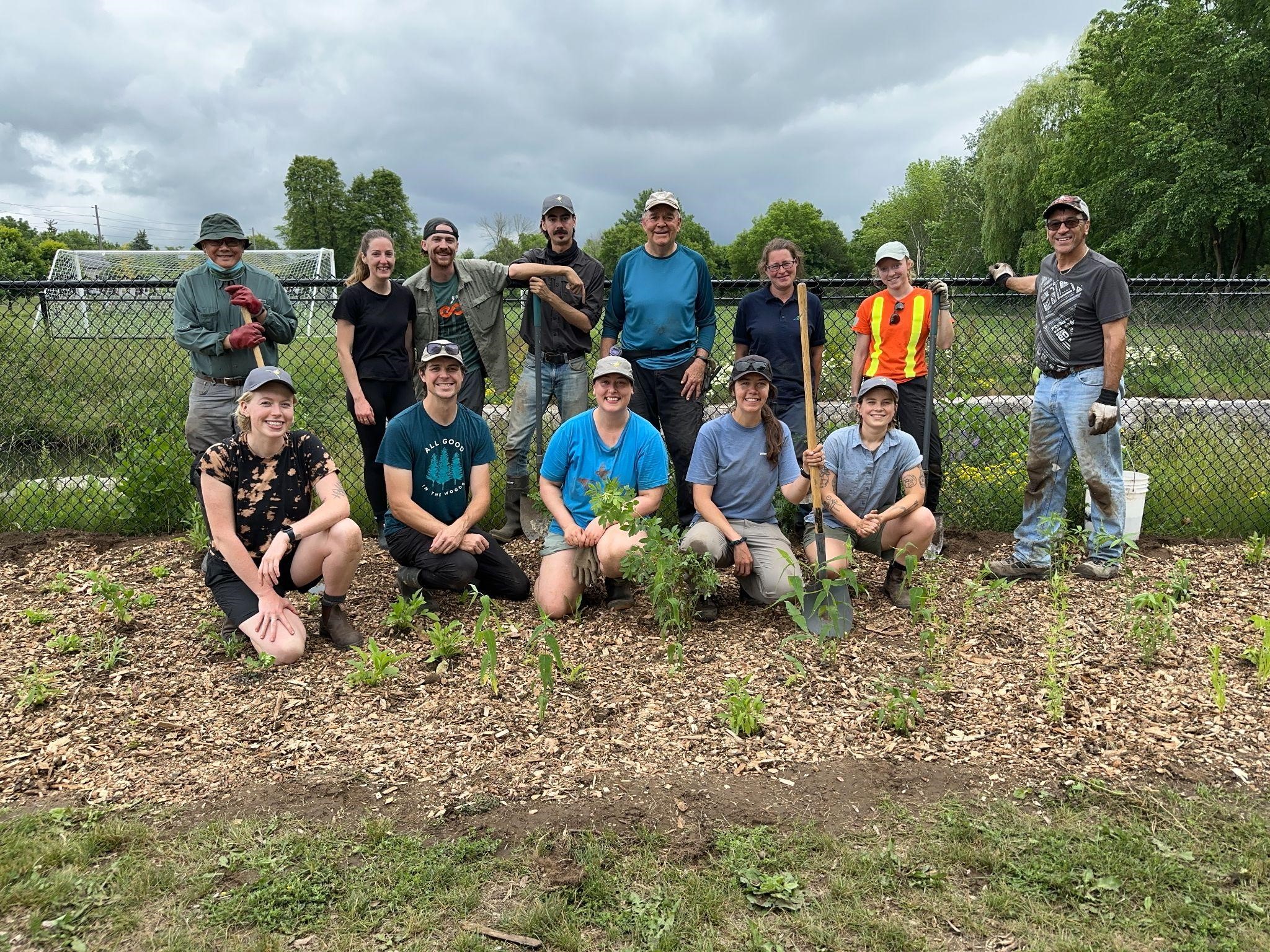
Community Planting Event group photo. Photo: Claire Marshall
And while you may be able to help out your local Black-Capped Chickadees and other birdfeeder visitors by putting out seeds and fruits, native species like Chimney Swifts and Tree Swallows depend on finding places to forage for insects to fill their stomachs.
If you were asked to go outside right now and find an insect, where would you go?
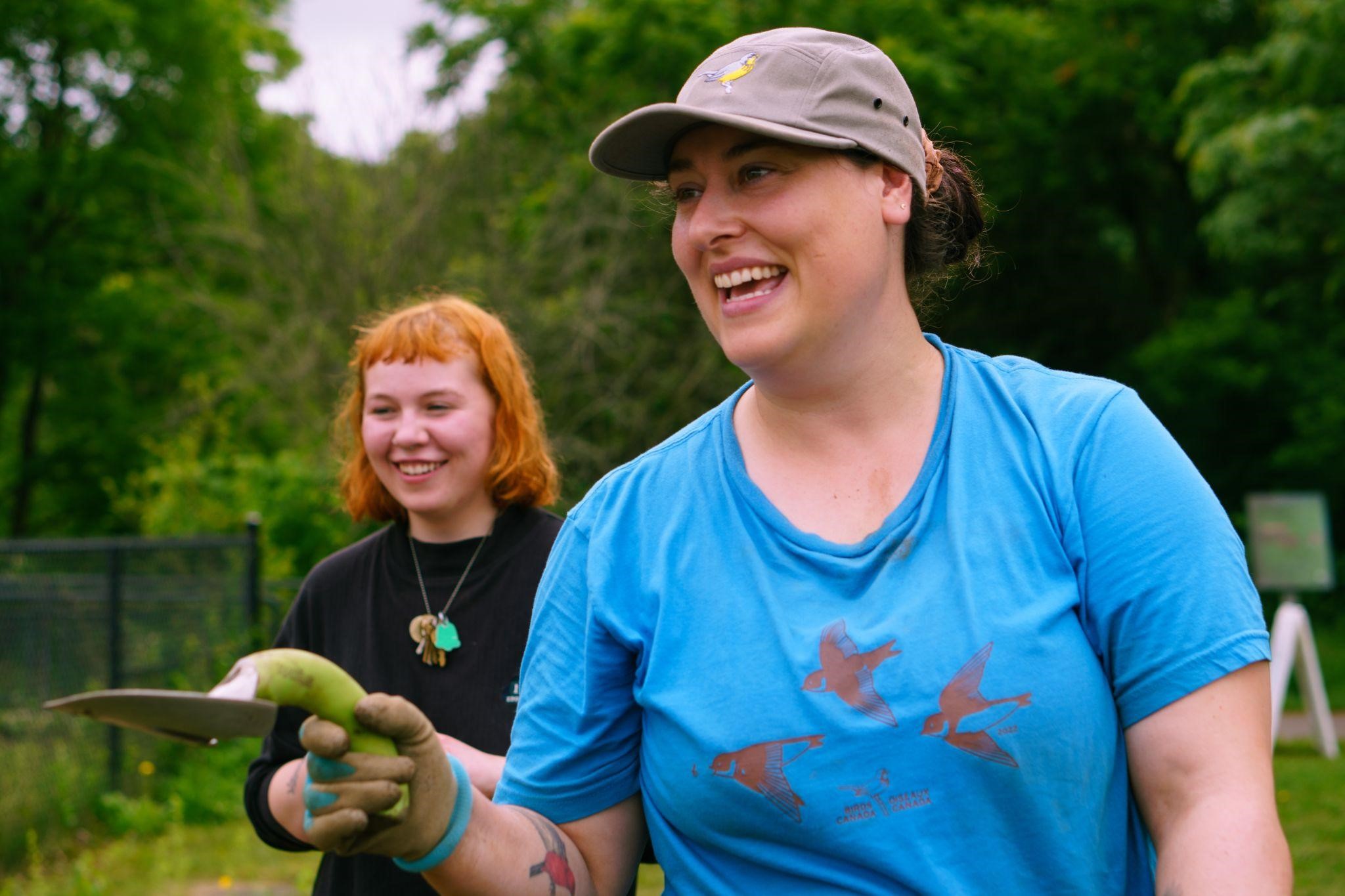
Ontario Projects Biologist Natasha Barlow poses with trowel. Photo: Claire Marshall
My guess is that your instinct would take you straight to whatever herbaceous plant or leafy tree is closest to your doorstep! Our gardens are beaming with nutrients for insects, making them excellent places to start when it comes to increasing insect abundance and diversity.
Gardening is one of the finest examples there is to show just how connected we all are – to our neighbours, to our waters, and to our entire ecosystem.
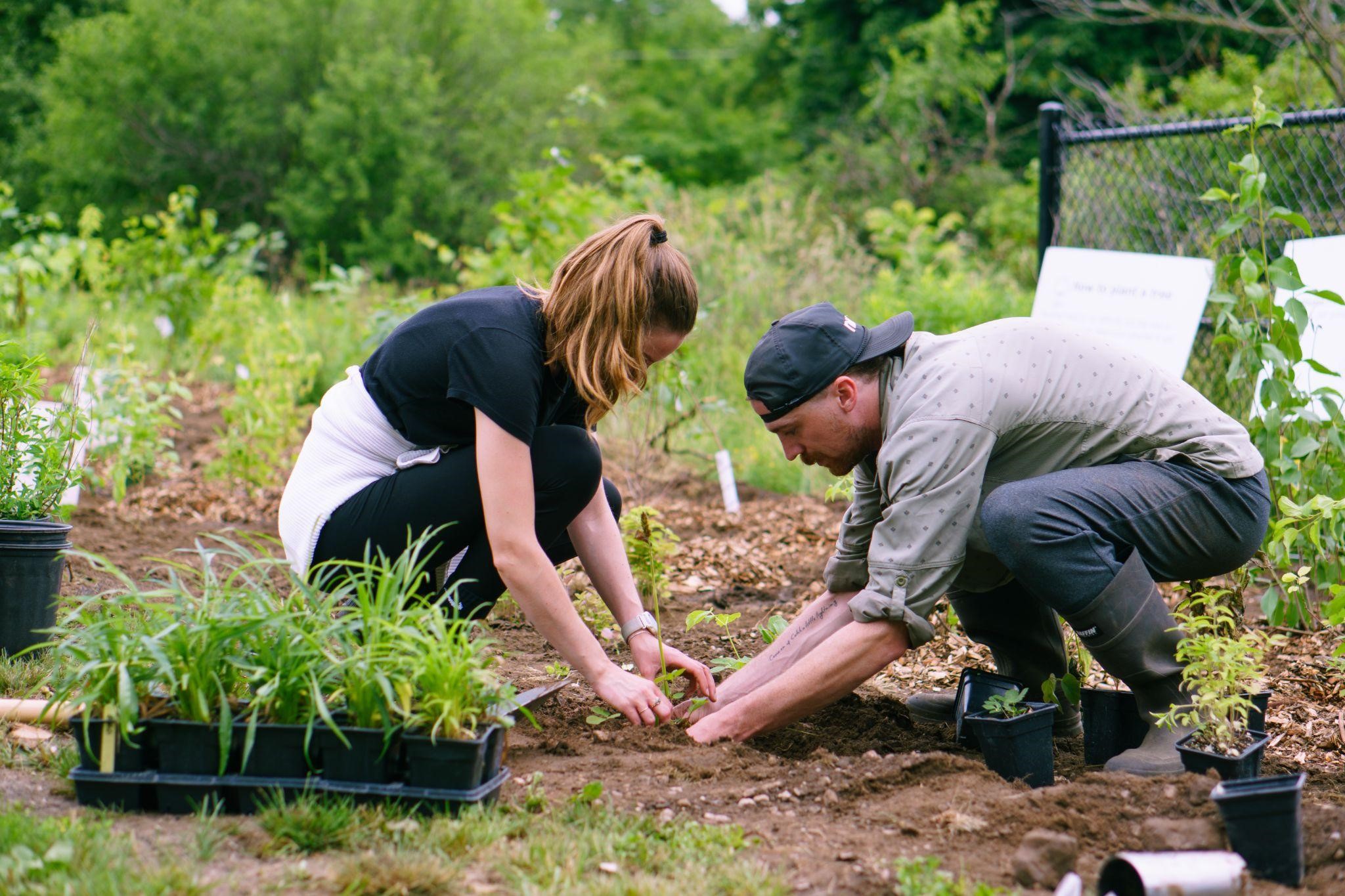
Volunteers spreading mulch after planting Photo: Claire Marshall
And connected, indeed, we are to the community around us. This is why we were so thankful to have partnered with the City of Guelph and the Speed Valley Chapter of Trout Unlimited Canada to host a Community Planting Event at Silvercreek Park in Guelph, Ontario, on June 24.
Members of these organizations, as well as community volunteers, came out to support the enhancement and beautification of the Pond Creek Outlet by planting a range of carefully selected native trees, shrubs, and wildflowers. This biodiverse garden is now beaming with new habitat for insects, from Sky-blue Aster and Early Goldenrods, to Tulip trees and Eastern White Cedar.
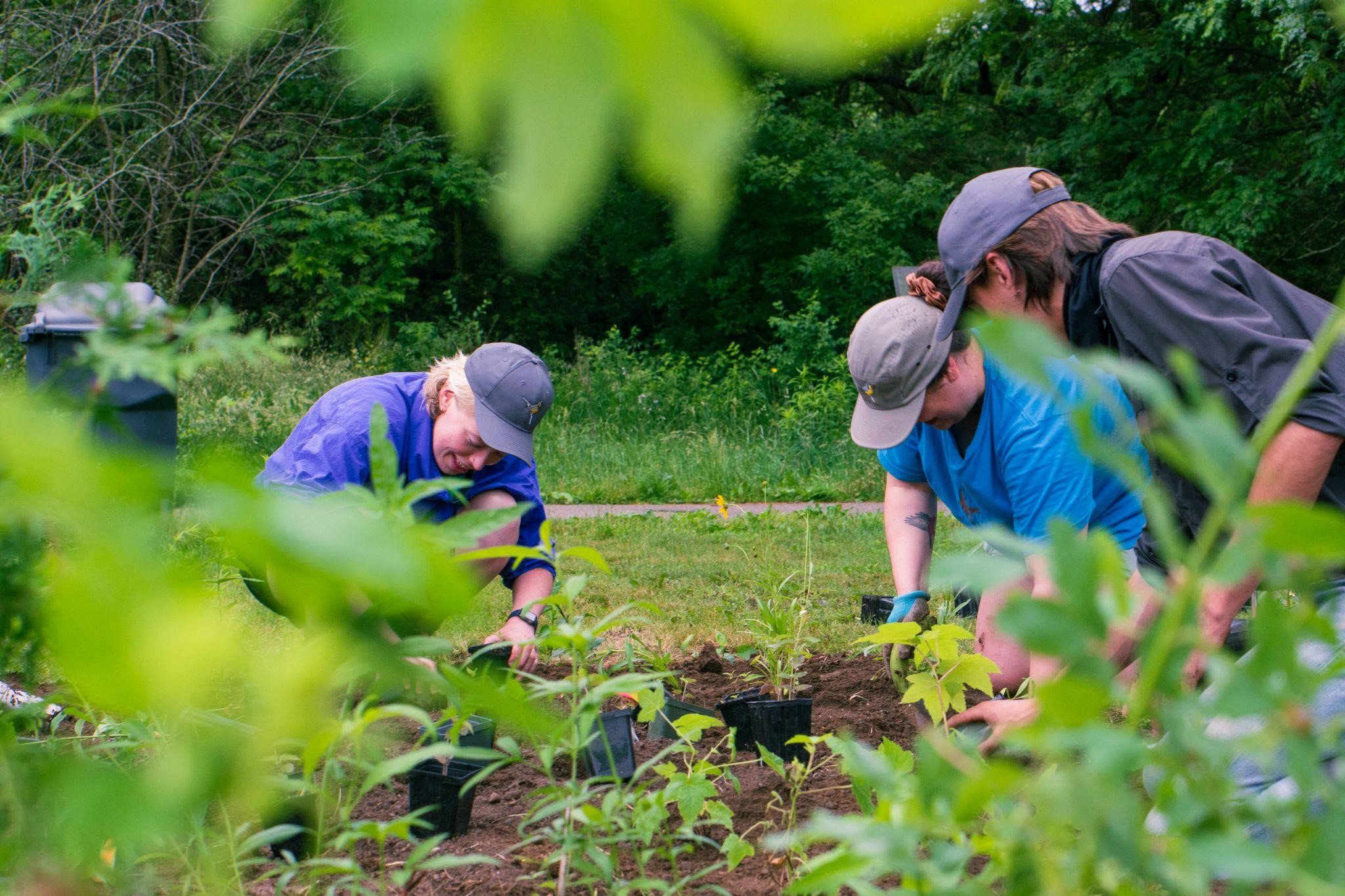
Aerial Insectivore crew and volunteers help with planting. Photo: Claire Marshall
Even as we were packing up to head out, a little fly perched upon a freshly planted Woodland Sunflower, ensuring we did what we came to do: help the wildlife of Silvercreek Park find new resources to thrive (we’ll try not to think about the lucky Eastern Kingbird that fly will feed later in the day).
But planting truly is just the first (big!) step. Our work now focuses on encouraging others in the community to learn how their own garden or outdoor space can be used, big or small, to encourage wildlife to visit and find refuge, especially in urban landscapes.
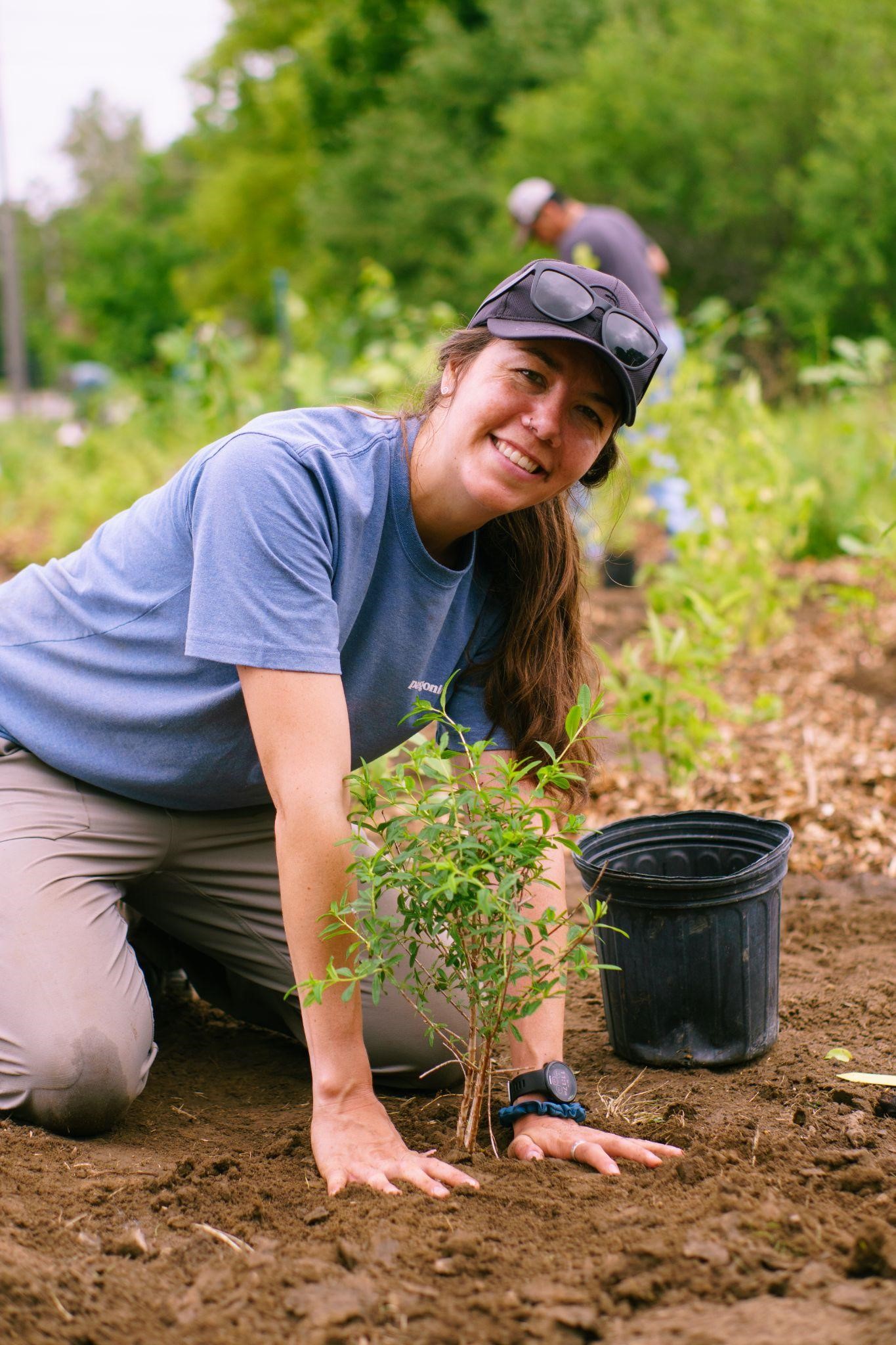
President of the Speed Valley Chapter of Trout Unlimited Canada, Alex Meeker. Photo: Claire Marshall
Whether it is hosting your own Community Planting Event to encourage native gardening, or you just want to find out what plant to grow in your overgrown pots (once you clear out all that mint that seems to pop out from nowhere), our Gardening for Birds resources will help guide you to make the best conservation-informed decisions to promote the well-being of wildlife we all hold so dear.

Aerial Insectivore Technician Gabriel Evans-Cook poses with shovel in-between planting. Photo: Claire Marshall
You can learn more about native gardening and what plants are suitable for your region by visiting our website birdgardens.ca.
Special thanks to TD Friends of the Environment Foundation, and Origin Native Plants, for making this event possible.
Until next time, happy gardening (and birding)!
The Aerial Insectivore Team
